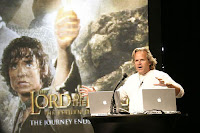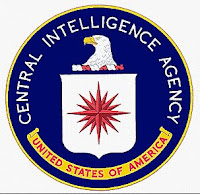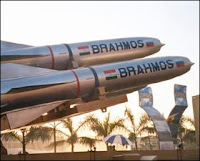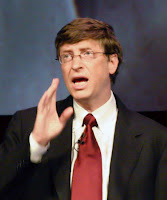Everyone talks of green nowadays; so you have green IT, green servers, green storage and now even greeen electronics. The vision is simple, move towards eco-friendly world, so many NGOs, especially Greenpeace, are leading the call for manufacturers of electronic goods to go clean and stop using toxic material. The biggest movement has come from the EU, that has put in regualtions and stipulations on the same.
Talk of green is important for India, as we are steadily ramping up our manufacturing capabilities, it makes sense to put in best practices at the start. It would be very foolish if, we did not. The story on Green Electronics was published in Dataquest magazine…(http://dqindia.ciol.com/content/industrymarket/focus/2007/107091701.asp)——————————————————————————
Call for Green Electronics
Electronics manufacturers need to stop using toxic metals in the manufacturing processes; they need to go green
Monday, September 17, 2007
‘At my signal, unleash hell, roared Maximus Desmus Meridius to his wearied men lined up against the last of the Saxon tribes. Which they summarily do. This scene from the film Gladiator captures the might and ferocity of the Roman Empire. In its heydays, the empire spread form Western Europe to Northern Africa. At the turn of first millennium, there was no other force in the world that could face up to the mighty Romans.
Yet, something from within the empire was gnawing at their strength. Most of the affluent Romans were stricken by Gout or strange mental illnesses. In fact, the Roman emperor Nero was supposedly playing the fiddle out of his insanity, when the city of Rome was aflame. Imperium Romanium was crumbling due to a bluish white metal known to them as plumbum, and to us as lead.
Toxic lead was responsible for most of these ailments, as the use of the heavy metal was quite prevalent in ancient Rome. The citizens, especially the blue-blooded ones, used to wine and dine out of vessels having lead in them. Lead was used in make-up, lead sugar (lead acetate) was used to sweeten wine, and so on.
Even today, some 2,000 years later, lead accounts for hundreds of deaths annually across the world, especially in developing countries. And, this time the culprit is not vessels or food but modern technologythings that making our life easier are the very things that are threatening our existence.
E-wastage
Modern equipment have made our lives much easier and comfortable. Yet, they are laden with toxic and health endangering chemicals. Right from the computer monitor to the semiconductor chip, almost all the part are either fabricated out of toxic metals or treated with them. Take the case of lead, it is found in glass panels and gasket (frit) in computer monitors (3-8 pounds per monitor), and solder in printed circuit boards and other components.
Cadmium occurs in such components as the SHD chip resistors, infrared detectors, and semiconductor chips. Mercury is used in thermostats, sensors, relays, switches, medical equipment, lamps, and mobile phones are found quite liberally in batteries. Barium is used in the front panel of a CRT. Beryllium is found on the mother-boards and “finger clips” as a copper beryllium alloy used to strengthen the tensile strength of connectors and tiny plugs while maintaining electrical conductivity, and so on. All these metals are known to have quite perilous impact on the human health.
But how can all these metals inside the computer and the mobile phone threaten us? E-waste is a term that describes the process of the transfer. Every year, users discard millions of PCs and phones across the globe, more so in the developed world. These  PCs and phones are dumped for newer, better and sleeker models. With hundreds of millions of such equipment discarded annually, the amount of electronic waste (or e-waste) that stacks up is mind-boggling.
PCs and phones are dumped for newer, better and sleeker models. With hundreds of millions of such equipment discarded annually, the amount of electronic waste (or e-waste) that stacks up is mind-boggling.
According to Greenpeace, the amount of electronic products discarded globally has skyrocketed recently, with 20-50 million tonnes generated every year. To get an idea of the amount, if the estimated e-waste generated every year would be put into containers on a train, the train would go once around the world in terms of length!
Poison in the Soil
Sadly, much of this e-waste finds its way into the developing countries in Asia and Africa. China and India have been one of the favored destinations for such dumping. Local contractors are paid to dismantle these products, which they do by employing cheap manual labor. It is during this dismantling that toxins come to the fore. They not only endanger the life of the laborer but also seep into the soil thereby contaminating the water table. Now the dangerous domino is set in motion, the contaminated water used for irrigation results in toxin-tainted food crop and poisons the whole food chain. The ill effects of these toxic metals are bone chilling. Poisoning threatens even people who have not been in direct contact with these metals; people like you and me.
Going Green
Of the many solutions for tackling this gargantuan e-waste crisis, green electronics is the most promising. Rather than trying to solve the crisis at the ground level, isnt it better to deal with it at the very onset at the manufacturing level? The idea is simple and sure to work. All electronic manufacturers must stop using hazardous metals while fashioning computers or other devices. And, going a step further, they should put into place a robust recycling strategy for their discarded products. If there are no toxins in the e-waste, it wont threaten our lives. Yet Green Electronics is easier said than done.
There has been a lot of resistance to this movement, not surprisingly from electronics manufacturing companies. In this outsourced world it is difficult to control all the manufacturing processes, take the case of a mobile phone, the screen could be fashioned in one part of China, the IC in Taiwan, the plastic body in Vietnam, and the software in India. And this is just the tip of the iceberg as these contractors would further sub-contract the work. In such a scenario, where the company is not in complete control of the manufacturing process, it is very tough to ensure that the manufacturing process does not harm the environment.
Secondly, the process of finding replacements for these commonly available products can be quite expensive, not only in terms of research but also in sourcing. Little wonder that companies have often shied away from sharing information about their manufacturing processes. But the tide is shifting.
Green Guide
Under pressure from governments and non-governmental bodies, electronics manufacturers have been under fire for a shift towards a greener manufacturing process. The biggest push has come from the European Union that has over the last few years passed strict legislations against the use of toxic materials in the manufacturing process. Waste Electronics and Electrical Equipment (WEEE) Directive and Restriction on Hazardous Substances (RoHS) Directive are two legislations that have set the ball rolling.
From the NGO side, Greenpeace has been a driving force behind the move for Green Electronics. Every quarter, Greenpeace publishes the Green Electronics Guide that ranks leading mobile and PC manufacturers on their global policies and practice on eliminating harmful chemicals and on taking responsibility for their products discarded by consumers. All these companies are ranked on information that is publicly available and through communications/clarifications with companies.
The last list was published in the end of June, 2007. Of the fourteen companies that were ranked, Nokia, Dell and Lenovo were the toppers, while HP, Panasonic, LGE, and Sony came in last. 
Greenpeace list of companies that are using environment friendly manufacturing and recycling processes. Released every quarter, Nokia tops the list this time, followed by Dell and Lenovo. The ranking criteria were based on two aspectscompanies clean up their products by eliminating hazardous substances; and take back and recycle their products responsibly, once they become obsolete.
Over the years, Nokia has maintained its leadership on the top of the table, but the gains made by Dell have been very impressive. The computer manufacturer has put in place a strong definition of the precautionary principle, timelines for substituting toxic polyvinyl chloride (PVC) and brominated flame retardants (BFRs) and explicit support for individual producer responsibility. Dell has also announced its intention to provide global free take back and recycling services to individual consumers wherever its products are sold.
The only reason why Dell lost points is because it did not have models free of PVC and BFRs on the market. Dell now scores top marks for reporting its recycling rate as a percentage of sales. The company has even put in a recycling program in India as part of global efforts. Even the Environment Product Environmental Assessment Tool (EPEAT) has given a Gold to Dells latest OptiPlex 755 line of desktops and notebooks.
On the other hand PC manufacturers like Lenovo, and Apple lose points on the Greenpeace list because of a weak global take-back program, and also not eliminating the worst chemicals from their product lines. HP has been falling on the tables because of its failure to provide clear timelines for eliminating the worst chemicals. It also looses points for weak definition of take-back policies.
Not all Agree
But even the Green Electronics Guide is not without its detractors. Patrick Moore, co-founder and former leader of Greenpeace, does not quite agree with the findings and disputes the very basis of the report. Moore disputes Greenpeaces contention that PVC is dangerous for the environment and should be discarded. He recently pointed out that PVC is one of the safest and most sustainable materials available and that in contrast, it is the alternatives that often pose unknown health or environmental risks. According to media reports, he told electronics manufacturers not to “blindly follow the Greenpeace political agenda,” which is “devoid of any scientific basis” and would result in more costly, less climate-friendly products.
Whatever might be the outcome of this debate, it has quite significant implications for countries like India, simply because we are already suffering due to dumping of e-waste, and if proper mechanism for environmental control is not established in the numerous manufacturing facilities, the results could be dire. Hopefully, the global companies setting up operations in India, will continue to follow the principles of Green Electronics and not resort to malpractices due to laxity in legislation and enforcement.
Every year thousands die due to toxic poisoning. For the sake of humanity, lets hope that history does not repeat itself. It goes without doubt that companies like Dell, Apple, HP and others have a responsibility for reigning in the hell that has been unleashed upon our environment, knowingly or unknowingly.
Shashwat DC
shashwatc@cybermedia.co.in
***
Effects of Toxic Metals
Lead: Lead causes damage to the central and peripheral nervous systems, blood, kidneys, and reproductive systems. Effects on the endocrine system have been observed and its serious negative effect on children’s brain development are well documented
Cadmium: Cadmium compounds are toxic with a possible risk of irreversible effects on human health, and accumulate in the body, particularly kidneys
Mercury: Mercury can cause damage to various organs including the brain and kidneys, as well as the foetus. Most importantly, the developing foetus is highly susceptible through maternal exposure to mercury
Hexavalent Chromium/Chromium VI: Chromium VI is still used as corrosion protection of untreated and galvanized steel plates, and as a decorative or hardener for steel housings. It easily passes through cell membranes and is then absorbed, producing various toxic effects in contaminated cells. Chromium VI can cause damage to DNA and is extremely toxic in the environment.
Plastics including PVC: Plastics make up 13.8 pounds of an average computer. The largest volume of plastics (26%) used in electronics has been poly-vinyl-chloride (PVC). PVC is mainly found in cabling and computer housings, although many computer moldings are now made with the somewhat more benign ABS plastics. PVC is used for its fire-retardant properties. As with other chlorinecontaining compounds, dioxin can be formed when PVC is burned within a certain temperature range
Brominated Flame Retardants (BFRs): BFRs are used in the plastic housings of electronic equipment and in circuit boards to prevent flammability. More than 50% of BFR usage in the electronics industry consists of tetrabromobisphenol A (TBBPA), 10% is polybrominated diphenyl ethers (PBDEs), and less than 1% is polybrominated biphenyl (PBB)
Barium: Studies have shown that short-term exposure to barium has caused brain swelling, muscle weakness, damage to the heart, liver and spleen
Beryllium: Beryllium has recently been classified as a human carcinogen as exposure to it can cause lung cancer. The primary health concern is inhalation of beryllium dust, fume or mist. Workers who are constantly exposed to beryllium, even in small amounts, and who become sensitized to it can develop what is known as Chronic Beryllium Disease (beryllicosis), a disease primarily affecting lungs. Exposure to beryllium also causes a form of skin disease that is characterized by poor wound healing and wart-like bumps. Studies have shown that people can still develop beryllium disease even many years following the last exposure
Phosphor and additives: Phosphor is an inorganic chemical compound that is applied as a coat on the interior of the CRT faceplate. Phosphor affects the display resolution and luminance of images that is seen in the monitor. The hazards of phosphor in CRTs are not well known or reported, but the US Navy has not minced words about the hazards involved in some of their guidelines: “NEVER touch a CRTs phosphor
Coating: it is extremely toxic. If you break a CRT, clean up the glass fragments very carefully. If you touch the phosphor, seek medical attention immediately.” The phosphor coating contains heavy metals such as cadmium and other rare earth metals, eg, zinc, vanadium, etc. as additives. These metals and their compounds are very toxic. This is a serious hazard posed for those who dismantle CRTs by hand.
Source: http://www.itwastesolutions.co.uk/
***
Did you know?
The average lifespan of computers in developed countries has dropped from six years in 1997 to just two years in 2005 Mobile phones have a lifecycle of less than two years in developed countries 183 mn computers were sold worldwide in 200411.6% more than in 2003 674 mn mobile phones were sold worldwide in 200430% more than in 2003 By 2010, there will be 716 mn new computers in use. There will be 178 mn new computer users in China, 80 mn new users in India
Source: Greenpeace



















